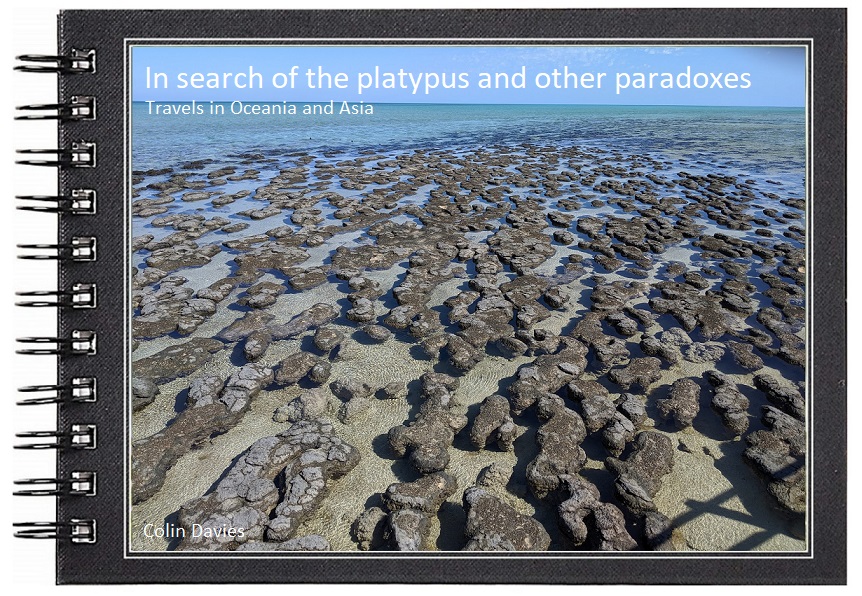During the holiday we saw what looked like two different species of mudskipper at Port Douglas. The first was a small fish about 3" (7.5cm) long and which inhabited the mud on the edge of the marina. This was a very limited habitat, with mud no more than about 1m wide, with rocks and scattered mangroves growing in it. From memory I don't remember this habitat expanding or contracting much with the tide, i.e. there wasn't much of a tidal range.
The second type of mudskipper was seen on the banks of the tidal section of river at Port Douglas. Here on the edge of the mangroves there was much more exposed mud and the mudskippers here were a lot bigger, some reaching 8" (20cm). There were also no rocks on this mud and it seemed to have a large tidal range.
When I saw them I couldn't be sure if these were the same species as those seen in the harbour, i.e. I thought it possible that the larger fish were simply the adults whilst the smaller fish might be juveniles occupying a different habitat.
Since I've been back in the UK I've been doing some research to try to find the truth about these fascinating creatures. Whilst searching the internet for infromation I came across a paper called "The natural history of
mudskippers in northern Australia, with field identification characters -
Takita, Larson & Ishimatsu (2011)". It cost me £2 to download but proved to be an excellent read.
It turns out that not only are there many species of mudskipper in northern Australia, there are in fact several genera. I'm now convinced that we saw two
species, in
fact I think that they are from two different genera Periophthalmodon and Periophthalmus. They're a bit difficult to id for sure from photographs, but I
think that the large fish from the river is Periophthalmodon
freycineti or giant mudskipper whilst the fish from the harbour is silver-lined (barred)
mudskipper Periophthalmus argentilineatus.
Giant mudskipper.
Silver-lined mudskipper. I think.... I can't see the silver lines on this one but it was in the same area as the fish above.
Saturday, 7 November 2015
Subscribe to:
Post Comments (Atom)
-
Photo: Snowy albatross. "Wanderer at 6 o'clock!", the cry went up and sent shivers down my spine. This was the moment I ha...
-
I've been to Southern India twice now, but neither were birding holidays. The first was to meet the family of my son's...
-
Philips Island is a 90 minute drive south east of Melbourne. It's a proper island but you can drive onto it via a bridge. The day we ...









No comments:
Post a Comment